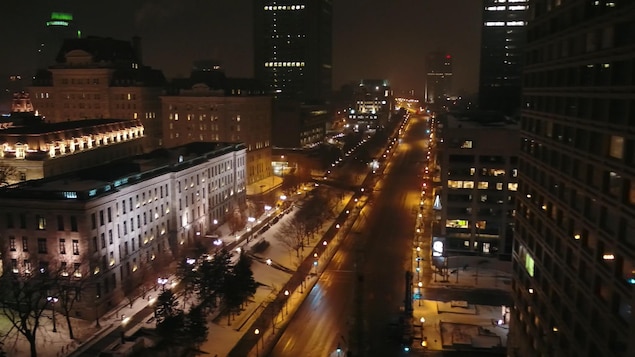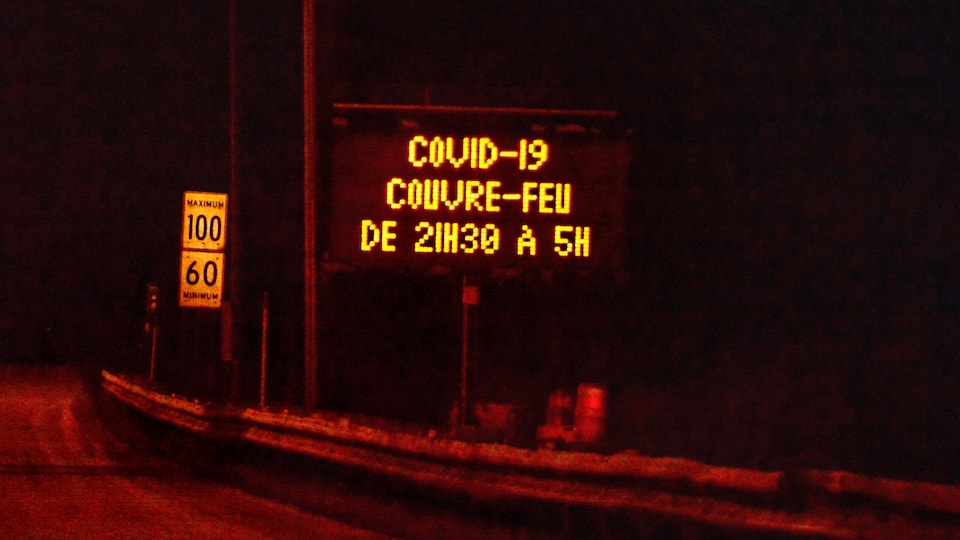This week, the National Institute of Public Health of Quebec (INSPQ) unveiled an analysis of the population’s socializing habits, before and during the COVID-19 pandemic. A comparison is made thanks to the CONNECT study launched in 2018-2019.
By comparing data for a year Normal
And for those that have occurred within the past twelve months, the researchers concluded that the occurrence of home visits comes next Seasonal
. In other words, even if during the pandemic there were much fewer visits, whether or not their fluctuations are guided by the curve itself or the health crisis.
After the peak during the holidays, there is a significant decrease in contact with visitors in January, a gradual increase in February and during the school holidays, and a stabilization in March.
Could you read a reportINSPQ. Results that apply to the two years under study.
The analysis shows that Quebecers were especially quiet during the 2020 holiday season. There were even fewer reported visits than in September or during the March holiday.
curfew
Although they were already gathering data to help make public health decisions, researchers came up with the idea for this measurement in early winter.
Prime Minister Francois Legault had just announced a drastic tightening of sanitary measures after a bad month in December. For the first time since the start of the crisis, the province will be subject to a curfew from January 8th.
We have considered doing this analysis especially since the curfew came into effect.
Says Melanie Drollet, chief epidemiologist for the CONNECT study and a researcher at the CHU de Québec-Université Laval Research Center.
Early in January, Ms. Drollet’s team noticed a marked drop in meetings at home. About 25% of study participants said they visited or received guests, compared to 41% during the holidays.
It might be tempting to attribute this decrease to the curfew. But it turns out that this decline in social contact at home is following the same trend, all things considered, as was observed during a normal year, as the rate decreased from 93% to 57% in 2018-2019.
This new analysis gives us part of the answer. It really shows that, after the holiday season, we have a natural decline in our social connections.
Following this seasonal reasoning, the numbers began to rise again the following month. These connections then increased significantly to 34% in February, and then to 46% during Spring Break. In March, this figure was 37%, which is comparable to that in the fall
The report adds.
Not evidence
Despite these results, theINSPQ Take care not to draw conclusions about the effectiveness of the curfew as a health measure. There is no evidence that it works, nor is there evidence that it does either
, Mélanie Drolet argues.
from direction, You could say the curfew is not working
It says the home visit data is similar for the fall of 2020, before the measure was implemented, and in March 2021.
On the other hand, it is possible that the natural increase in March could have been mitigated by the ban on evening outings. So we cannot Don’t really draw any conclusions
Drollet says.
To date, there is still little solid data on the impact of the curfew on the transmission of COVID-19. Few researchers are willing to get wet.
In early April, the Ministry of Health and Social Services and the Prime Minister’s Office recommended a mobility study to justify the measure. The report aims to compare the movements of Quebecers under curfew and those of Ontario residents, as no such measure was implemented in January.
Analysis by Canadian researchers from December 1 to January 23 concluded that there was a 31% decrease in trips to Quebec after 8 pm. However, movement during the day increased by 8.7%.
Once again, theINSPQ He was careful not to draw any conclusions about the curfew’s effectiveness. Epidemiologist Gaston de Ceres said this is a transmission study, not a transmission study. Usually there is an association between mobility and mobility, but this is not a direct guide.
Last right
Alongside the debate over the curfew, Melanie Drollet wants to underscore the efforts residents have made a year now, and particularly in recent months. In his view, the gap between contacts before the pandemic and that observed during the crisis speaks for itself.
Quebecers have made great sacrifices to reduce their social contacts, especially those in homes.
Praise the epidemiologist. She is now calling for her to stay on track for Still a few weeks
.
These efforts must be maintained to limit social contact, even if one is vaccinated, and the appropriate time to achieve high vaccination coverage and for the vaccination campaign to continue to have an impact.
, Begging.
Before the pandemic, each person had an average of 7 to 8 social contacts per day, regardless of location (home, work, etc.). That number dropped to 3 in the spring of 2020. Over the past two months, Kiebikers have been close to 5 social contacts on a daily basis.

“Music guru. Incurable web practitioner. Thinker. Lifelong zombie junkie. Tv buff. Typical organizer. Evil beer scholar.”








More Stories
Trudeau helps the rich and taxes the ordinary world: his budget is painful
Quebec, the city of gourmet: a new destination for lovers of Asian cuisine
CBC/Radio-Canada will cut fewer jobs than expected